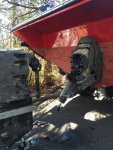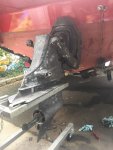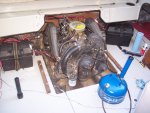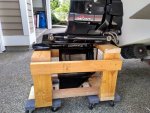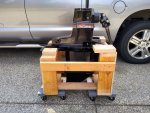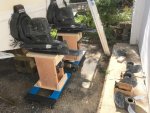kirkll
Cadet
- Joined
- Jun 9, 2020
- Messages
- 27
I know this subject is a bit premature for the time of year it is, but being a new boat owner, and never having had to maintain an inboard motor, I’m just looking ahead a bit and doing some research.
I'm in wester Oregon , just south of Portland. So we rarely get seriously cold winters. But every now and then we do get a couple weeks of seriously cold weather staying in the twenties, so I thought I’d look into the procedures to protect my boat engine from freezing up.
reading the sticky post on winterizing these contraptions is seriously intimidating for anyone not really inclined to tearing their outdrive off and pulling half the motor apart draining the water out.
when I purchased this old boat, I had nothing against studying up on the maintenance and rolling up my sleeves to a certain extent. But I really do not have any serious ambitions to become a marine mechanic at 65 years of age.
with that being said.... there have got to be other options for keeping these things from freezing up in winter besides tearing things apart, completely draining the system, and using antifreeze. Especially when I plan on using this boat 9-10 months out of the year for fishing. December, January & February is my only down time, and often I’m out fishing again in late February.
I lived in Alaska years ago and we had circulating block heaters that worked very well on a closed system on auto engines. But these raw water cooling systems are different.
Im sure I’m not the only one that still has concerns about winterization , that really isn’t up to pulling an outdrive every year.
what other options besides living in Florida are there?
I'm in wester Oregon , just south of Portland. So we rarely get seriously cold winters. But every now and then we do get a couple weeks of seriously cold weather staying in the twenties, so I thought I’d look into the procedures to protect my boat engine from freezing up.
reading the sticky post on winterizing these contraptions is seriously intimidating for anyone not really inclined to tearing their outdrive off and pulling half the motor apart draining the water out.
when I purchased this old boat, I had nothing against studying up on the maintenance and rolling up my sleeves to a certain extent. But I really do not have any serious ambitions to become a marine mechanic at 65 years of age.
with that being said.... there have got to be other options for keeping these things from freezing up in winter besides tearing things apart, completely draining the system, and using antifreeze. Especially when I plan on using this boat 9-10 months out of the year for fishing. December, January & February is my only down time, and often I’m out fishing again in late February.
I lived in Alaska years ago and we had circulating block heaters that worked very well on a closed system on auto engines. But these raw water cooling systems are different.
Im sure I’m not the only one that still has concerns about winterization , that really isn’t up to pulling an outdrive every year.
what other options besides living in Florida are there?




















